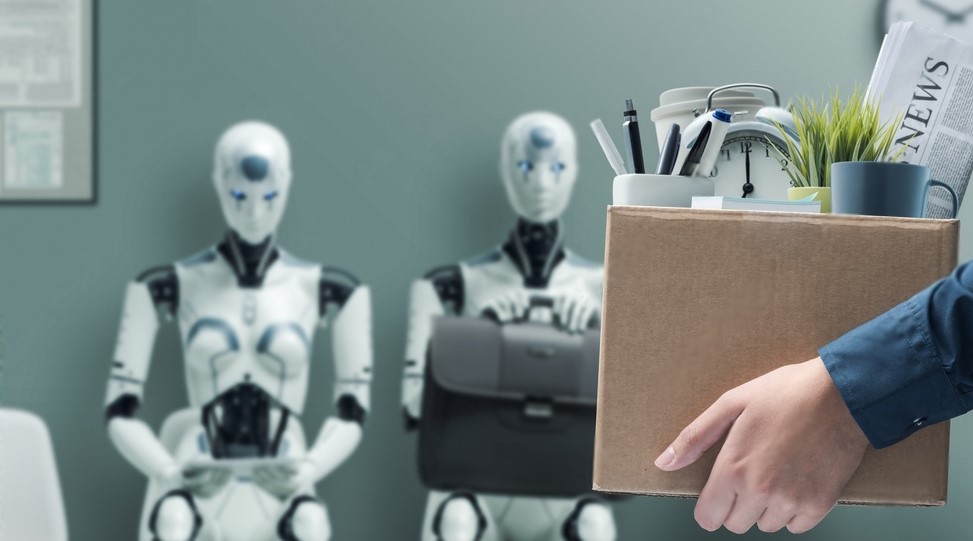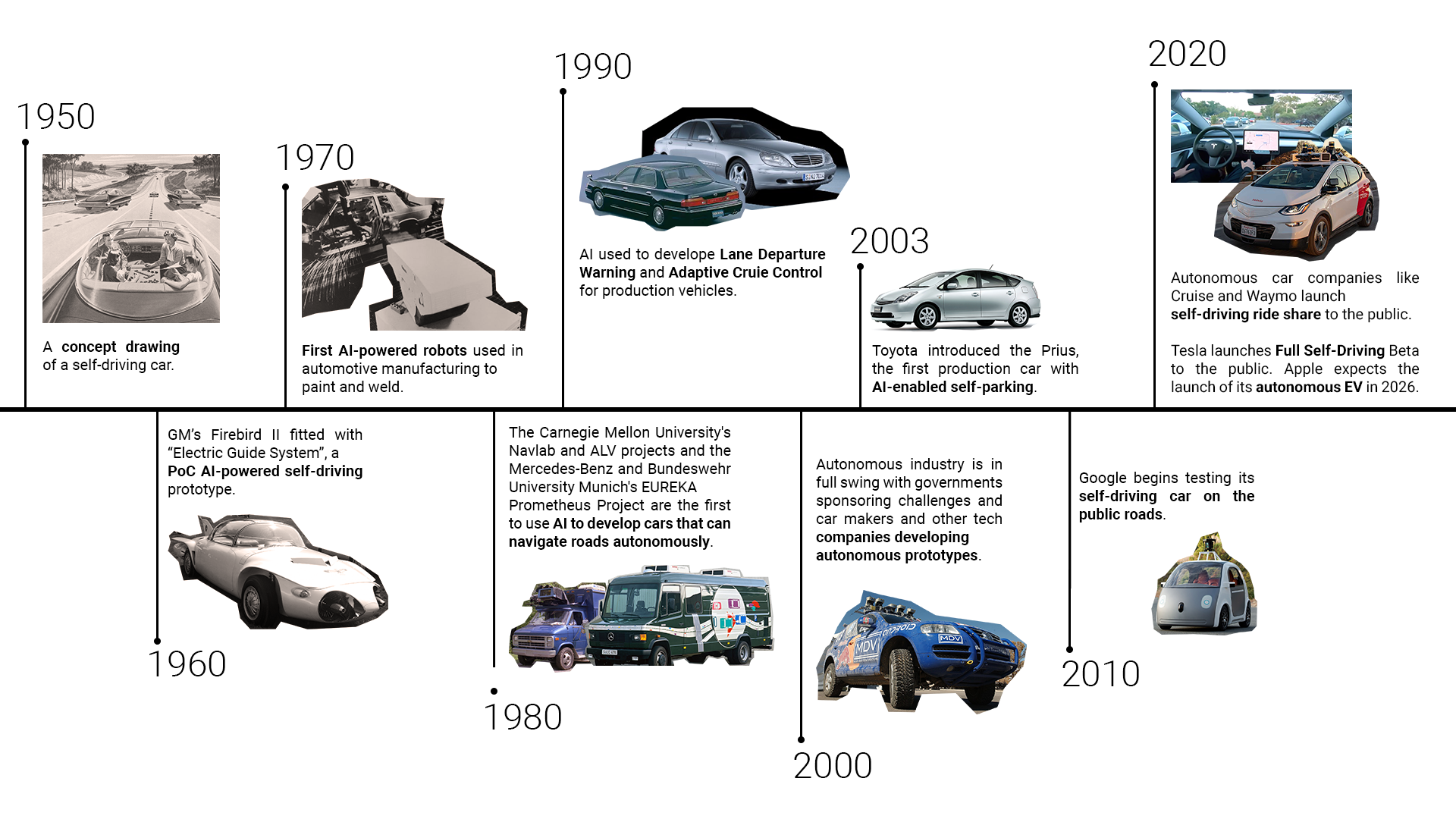Introduction
Artificial intelligence (AI) is rapidly transforming the automotive industry. From self-driving cars to advanced driver assistance systems, AI is changing the way we drive and the way cars are designed, manufactured, and maintained.

10 Myths About AI in the Automotive Industry
1. AI will lead to job losses in the automotive industry.
While it is true that AI is likely to lead to some job losses in the automotive industry, it is also likely to create new jobs in areas such as programming, maintenance, and quality control. In fact, a study by McKinsey Global Institute found that AI could create up to 2.3 million new jobs in the automotive industry by 2030.

2. AI is not compatible with traditional automotive manufacturing methods.
AI can be used to complement traditional automotive manufacturing methods, not replace them. For example, AI can be used to optimize production schedules, automate production and warehouse tasks, and improve logistics operations.
3. AI is too expensive to implement in cars.
AI technology is becoming increasingly affordable, and the cost of implementing AI in cars is expected to continue to decline in the coming years, following the cost reduction curves of all computational electronics. In fact, AI, if used in self driving, it’ll be cheaper than hiring a human driver over the life of a vehicle. The concept of car ownership itself will change as self-driving evolvs. As soon as cars will be able to navigate by themselves, people will no longer need to own a car, as they can request one when needed, saving them money on car ownership costs and freeing up space in cities. With this widespread implementation of AI, it is expected that this technology will tricle down to lower ranges of vehicles in the years ahead and should eventually become standard in all vehicles.
4. AI will make cars too complicated to repair.
AI-powered cars are not necessarily more complicated to repair than traditional cars. In fact, AI can actually be used to make cars easier to repair by automating diagnostic and repair tasks. However, according to a study by AAA, the average cost to repair a minor collision involving a vehicle with AI implementations such as ADAS, is $5,300, which is more than double the cost of repairing a similar collision involving a car without said technologies. The increased cost is due to the expensive sensors and cameras damaged in AI-equipped cars. These costs are, however, expected to decrease as the technology matures.
5. AI will make cars less safe.
AI has the potential to make cars safer by automating tasks such as collision avoidance and lane keeping. A study by the Insurance Institute for Highway Safety found that cars with automated safety features, such as blind spot monitoring, are involved in about 20% fewer accidents than cars without these features. Additionally, according to research by LexisNexis Risk Solutions, ADAS equipped vehicles showed a 27% reduction in bodily injury claim frequency and a 19% reduction in property damage frequency.
6. AI is not capable of driving in all weather conditions.
The different sensors that AI relies on to “see” the road are constantly evolving. These technologies are becoming increasingly capable of monitoring the environment and driving in all weather conditions. For example, Tesla’s Autopilot system has been shown to be able to drive safely in snow, rain, and fog.
7. AI is not capable of handling unexpected situations.
AI technology is also becoming increasingly capable of handling unexpected situations thanks to improvements in sensor technology, advances in machine learning, increased computing power and the collaboration between AI and humans. As an example, Tesla’s Autopilot system has been shown to be able to avoid accidents caused by pedestrians, cyclists, and other vehicles.

8. AI is not capable of making ethical decisions.
AI can make ethical decisions by being programmed with a set of ethical principles based on factors such as the law, moral philosophy and social values, which ultimately enable AI systems to make autonomous decisions based on self-learning and self-reasoning. There are however challenges that have to do with: determining the ethical principals suitable for the application; encoding ethical principles into the algorithm; testing the ethical decisions; overriding the ethical decisions. Even it being still under development, AI technologies have proven to be capable of making said decisions. As an example, Google’s self-driving car project has developed a system that can weigh the risks of different ethical decisions, such as whether to swerve to avoid hitting a pedestrian or to hit a pedestrian to avoid hitting a group of pedestrians. However, one has to take into consideration that AI algorithms are prone to delivering biased, non-neutral results, hence the importance of continuously monitoring and validating these systems.
9. AI is not ready for widespread use in cars.
AI is already being used in cars in a variety of ways not limited to autonomous vehicles, and it is becoming increasingly widespread. For example, adaptive cruise control, lane departure warning, and automatic emergency braking are all features that use AI. As AI continues to develop, it is likely to become even more widely used in cars.
10. AI will make cars boring to drive.
Some people believe that AI will make cars boring to drive, but this is not necessarily the case. AI can actually be used to make cars more fun to drive by customizing the driving experience to the individual driver. For example, AI can be used to adjust the car’s suspension, steering, and throttle response to the driver’s preferences. Additionally, AI can leverage machine learning to analyze data from the driver’s previous driving behavior and adjust driver aids accordingly. For instance, an AI algorithm might learn that a driver with less experience is more likely to make mistakes when driving in bad weather. In this case, the algorithm could adjust the driver aids to be more conservative.
Today's Applications of AI in Automobiles
In the years since, AI has become increasingly common in cars. Today, AI is used in a wide variety of automotive applications, including:
- Self-driving cars: One of the most exciting and promising applications of AI in the automotive industry, self-driving cars use AI to navigate roads, avoid obstacles, and make decisions about how to drive safely.
- Advanced driver assistance systems (ADAS): ADAS are a type of safety feature that uses AI to help drivers stay safe on the road. ADAS features include adaptive cruise control, lane departure warning, and automatic emergency braking.
- In-car entertainment and navigation: AI is also being used to improve the in-car entertainment and navigation experience. AI-powered systems can provide personalized recommendations for music, movies, and podcasts, as well as real-time traffic updates and weather forecasts.
- Manufacturing and maintenance: AI is also being used to improve the manufacturing and maintenance of cars. AI-powered systems can predict when parts will need to be replaced, optimize production lines, and diagnose problems with cars.
Conclusion
The future of AI in the automotive industry is bright. As AI technology continues to develop, we can expect to see even more innovative and groundbreaking applications of AI in cars. Self-driving cars are likely to become more common, and ADAS features will become even more advanced. AI will also be used to improve the in-car entertainment and navigation experience, as well as the manufacturing and maintenance of cars.
AI is poised to revolutionize the automotive industry. It has the potential to make cars safer, more efficient, and more enjoyable to drive. It is also likely to create new jobs and businesses in the automotive sector. The future of AI in cars is sure to have a major impact on the way we live and work.




